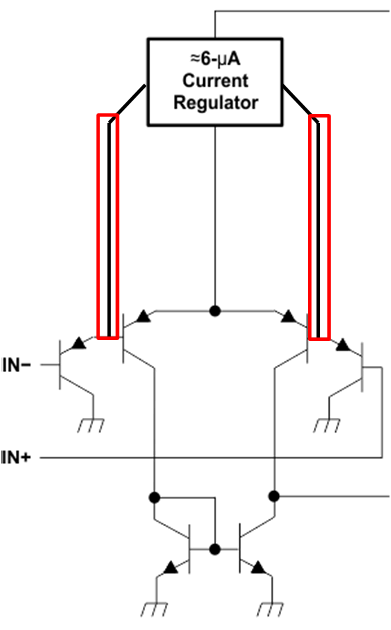SLOA277B january 2019 – july 2023 LM124 , LM124-N , LM124A , LM158 , LM158-N , LM158A , LM224 , LM224-N , LM224A , LM258 , LM258-N , LM258A , LM2902 , LM2902-N , LM2902-Q1 , LM2902K , LM2902KAV , LM2904 , LM2904-N , LM2904-Q1 , LM2904B , LM2904B-Q1 , LM2904BA , LM321 , LM324 , LM324-N , LM324A , LM358 , LM358-N , LM358A , LM358B , LM358BA , TS321 , TS321-Q1
2.1 Input Stage Schematic
The input stage in Figure 2-1 contains additional current source lines (shown boxed in red) not drawn in the simplified schematic found in the data sheets. All PNP emitters in the Darlington input stage have current source connections. These connections ensure a consistent input bias current that does not vary with the differential input voltage. This consistent current provides a high effective input to input resistance. Without the red box current sources, the input bias current would vary from zero to twice the normal bias current as the differential input voltage is varied. This is common on other bipolar transistor input op amps. TS321 is an exception to this rule because it does not have the additional current sources.
 Figure 2-1 Input Stage Schematic with All Current Source Connections
Figure 2-1 Input Stage Schematic with All Current Source Connections